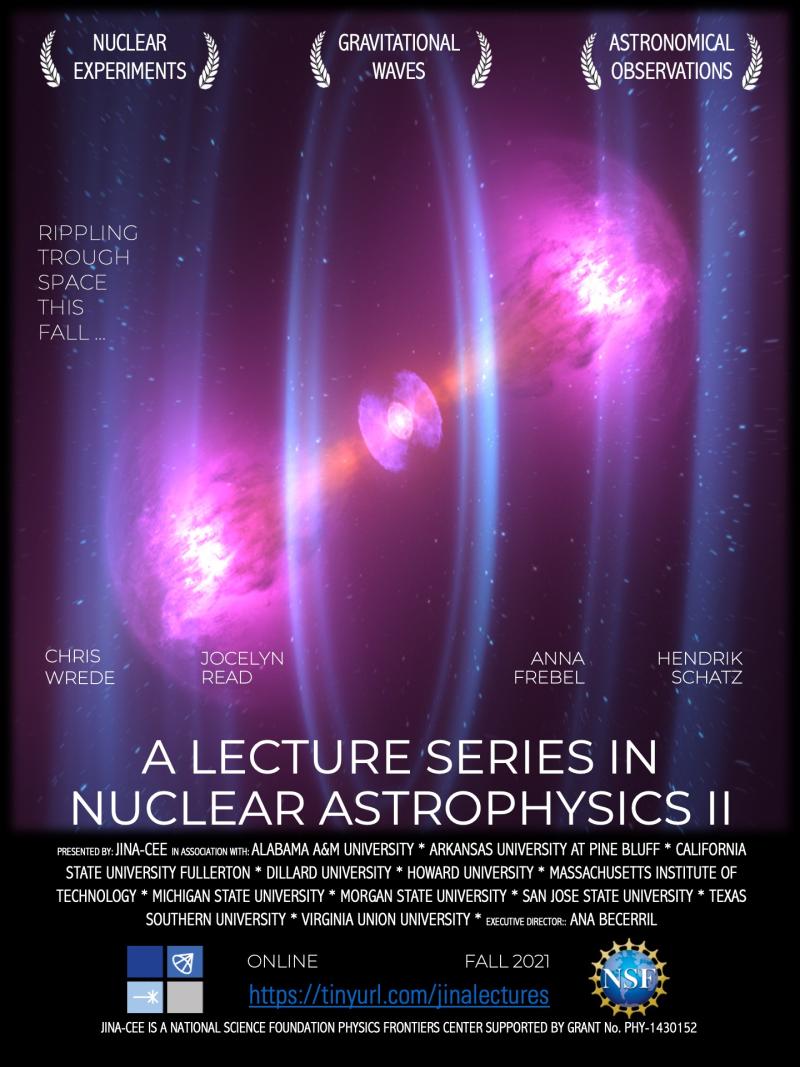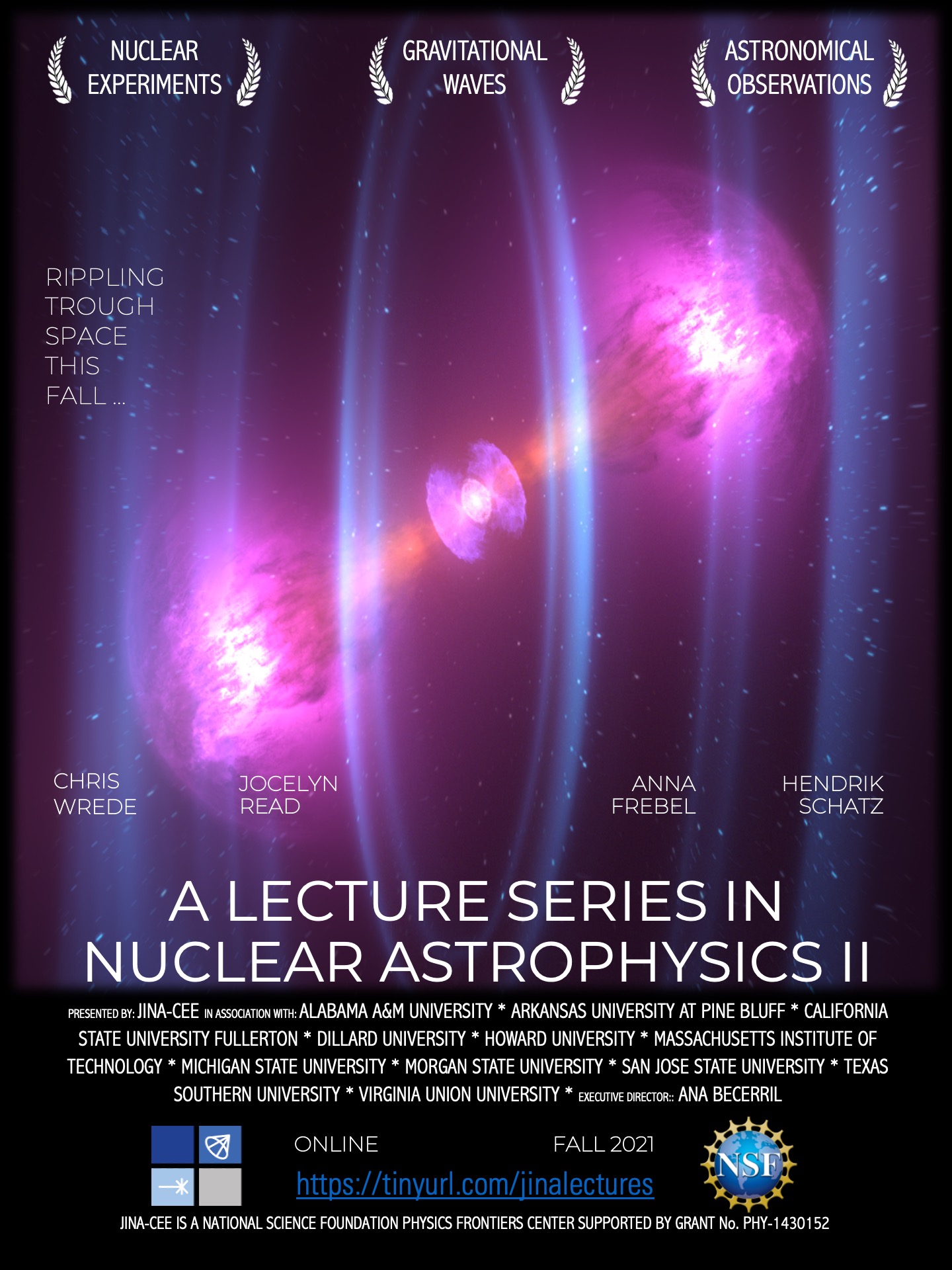Data
You will be redirected to cenamweb.org in 15 second(s). The JINA-CEE website is not updated anymore. The archived website can still be reached through the CeNAM website.
Second JINA-CEE Lecture Series in Nuclear Astrophysics for Minority Serving Institutions Now Publicly Available

The JINA-CEE program to introduce and attract students from Minority Serving Institutions (MSIs) to the field of nuclear astrophysics continues to grow. This year we welcomed three new partner institutions: Morgan State, San Jose State and California State Fullerton.
Following the success of the first introductory lecture series offered in the fall of 2020, a second lecture series was prepared for this fall. Students and faculty members from all nine MSIs involved joined these online conversations, and in some cases the lectures were embedded into the class curriculum. The 2021 lecture series focused on how the first observations of a neutron star merger in both gravitational waves and light have changed the way the study the cosmos. Our goal was to show students that given the new ability to detect the various signals (i.e. multi-messengers) from astrophysical phenomena, combined with new and more sophisticated measurements of the short-lived isotopes that take part in them, we are now much closer than ever to understand the most extreme environments in the cosmos. The lecture series showcases JINA-CEE research, stimulates appreciation of fundamental science, and encourages students interested in nuclear physics or astrophysics to pursue research experiences, for example as part of the JINA-CEE community. The 2021 lecture series has a dedicated website where you can learn more, and the recorded lectures are available on our YouTube channel.

Anna Frebel, Jocelyn Read, Hendrik Schatz and Chris Wrede each taught one of the four lectures of the series. They accompanied their stories with engaging audiovisuals that portrayed the very big and the very small scales in sizes and energies involved. Polls sprinkled throughout each lecture helped make each session more interactive and prompted attendees to reflect on the implications of the research they were learning about. Lecturers also provided information about graduate studies and research opportunities available at their institutions, and other career relevant information.
Chris Wrede from MSU kicked off the series by guiding the audience through rare-isotope research and the connection between atomic nuclei and stars like our sun and transient events such as pulsars. Jocelyn Read from Fullerton explained how gravitational waves are produced and detected and how they can help us understand neutron stars and neutron star mergers. Anna Frebel from MIT briefly reviewed the history of the universe in terms of chemical evolution in order to explain how the study of the oldest stars can provide clues about heavy element nucleosynthesis in neutron star mergers. Hendrik Schatz from MSU closed the series by reviewing what we know and what we don’t know about the origin of the elements, and introduced some of the exciting mysteries that FRIB may soon help to unlock.
